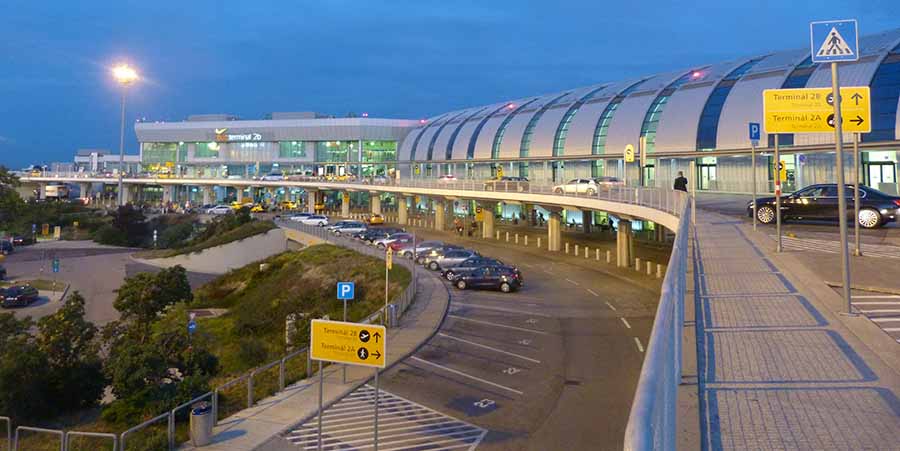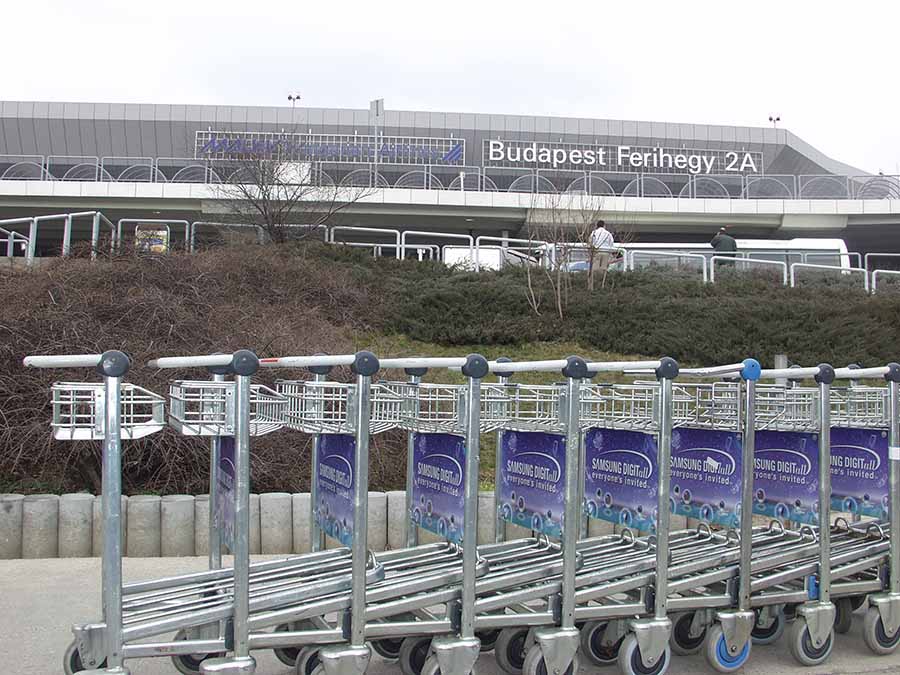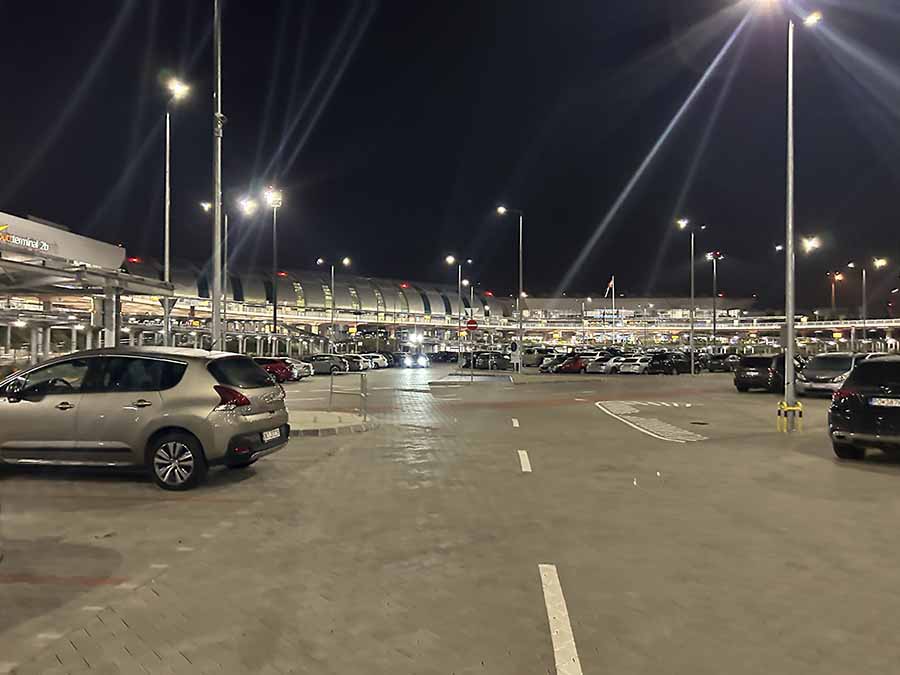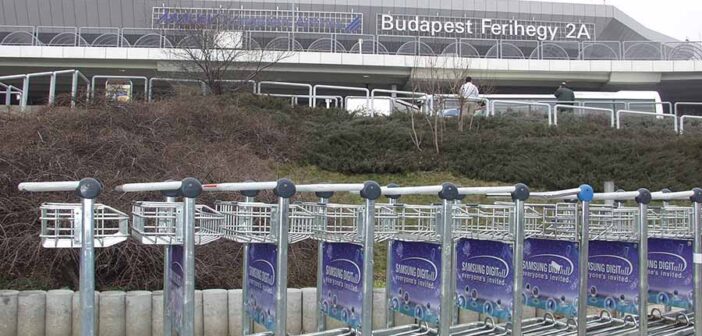
Budapest Ferenc Liszt International Airport, Hungary’s main aviation hub, welcomes over 16 million passengers annually, offering a well-organised and efficient gateway to Europe, Asia, and the Middle East. Located 16 kilometres southeast of Budapest’s city centre, the airport connects travellers to over 120 destinations via airlines such as Wizz Air, Ryanair, and Lufthansa. With two terminals designed for clarity and convenience, the airport ensures a straightforward experience for both departing and arriving passengers.
Getting to the airport from Budapest is hassle-free, with several transport options available. The 100E airport shuttle bus runs every 10 to 15 minutes to Deلk Ferenc Square, taking around 35 minutes and costing €4.50. The 200E bus connects to Kőbánya-Kispest metro station for €1.50, linking to the M3 metro line for city access in about 45 minutes.
Taxis, available outside both terminals, cost approximately €25 to €30 for a 25-minute ride, with Főtaxi offering fixed rates. Passengers driving can access multi-storey car parks or budget lots near Terminal 2, with rates starting at €8 per day, though booking ahead is recommended during peak periods. For those using public transport, tickets must be validated to avoid fines.
The airport’s layout is clear, with Terminal 2A handling Schengen flights and Terminal 2B serving non-Schengen destinations, connected by a short walkway. Terminal 1, now closed to commercial flights, is used for private aviation.
Check-in desks, security, and gates are centrally located, with SkyCourt, a central hub in Terminal 2, linking the concourses and housing shops and dining. Clear signage and a compact design keep walking times under 10 minutes, but peak hours can lead to congestion at security or passport control, particularly in Terminal 2B for non-Schengen flights. Passengers should arrive two hours early for Schengen flights and three hours for non-Schengen to account for potential queues, which may result from staffing shortages or technical issues with baggage systems.
Dining and retail options are plentiful, especially in SkyCourt and the departure areas. Duty-free shops by Heinemann, alongside boutiques selling Hungarian souvenirs and international brands, provide ample shopping opportunities.
Food choices range from fast-food outlets like Burger King and KFC to sit-down restaurants offering Hungarian dishes and international cuisine, with prices slightly above city averages. The Platinum Lounge in Terminal 2A and MasterCard Lounge in 2B offer Wi-Fi, snacks, and comfortable seating for €35 to €40, accessible to all passengers regardless of ticket class. Passengers note that dining areas can feel crowded during peak times, so eating before security may be faster.
Facilities cater to traveller needs with free unlimited Wi-Fi, numerous charging points, and seating areas, though padded seats are limited. Accessibility is well-handled, with ramps, lifts, and dedicated assistance for passengers with mobility issues, bookable 48 hours in advance. Other amenities include a 24-hour luggage storage service at €5 per bag, currency exchange, a pharmacy, and a children’s play area in SkyCourt. The Airport Hotel, a short walk from Terminal 2, offers convenient accommodation with free shuttles. For smokers, designated areas are available outside and airside.
On-time performance is generally reliable, with Budapest Airport maintaining a strong record despite occasional disruptions. Delays are typically caused by airline-specific issues, such as equipment problems, or weather-related challenges, particularly in winter. Passengers can check real-time flight updates via the airport’s website or in-terminal displays. As a hub for low-cost carriers and select full-service airlines,
Budapest facilitates connections with a minimum connection time of 45 minutes for Schengen-to-Schengen flights and 1 hour for Schengen-to-non-Schengen transfers. The connected terminals simplify transfers, but non-Schengen passengers may face delays at immigration due to manual checks, especially for non-EU travellers. Those on separate tickets should confirm luggage transfer policies to avoid rechecking bags.
Budapest Airport’s modern infrastructure, clear layout, and range of amenities make it a practical choice for travellers. Ongoing improvements, including expanded gate areas and eco-friendly initiatives like electric ground vehicles, reflect a commitment to enhancing the passenger experience. While occasional crowding or immigration delays can occur, the airport’s accessibility and services ensure a pleasant journey.
Aer Lingus
Aer Lingus operates from Terminal 2B at Budapest Ferenc Liszt International Airport for flights to Dublin. Check-in desks are typically in the Check-in Zone 2B (desks 31–50 range), but assignments are dynamic. Check-in opens 2 hours before departure and closes 45 minutes before departure. Online check-in is available 30 hours to 2 hours prior.
Departures are usually from Gates B in the non-Schengen area (B1–B20). Check airport screens or the Aer Lingus app for real-time gate assignments.
Ryanair
Ryanair operates flights to Dublin, with schedules varying, from non-Schengen Terminal 2B, with check-in desks typically in the check-in area (desks 20–40). Passengers should verify desk assignments on airport screens. Bag drop desks are open 2 hours to 40 minutes before departure.
Flights to Ireland (Dublin) typically depart from non-Schengen gates in Terminal 2B (gates B1–B20). Gates are assigned dynamically and displayed on departure boards.






